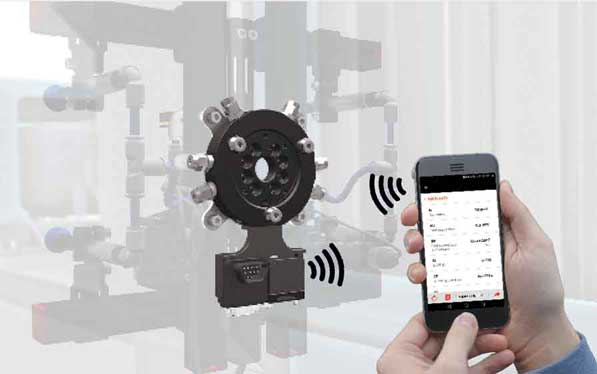MGM ROBOTICS

GIMATIC & MGM ROBOTICS: RFID device for EOATs
Gimatic’s RFID device for robotic end-of-arm-tooling, finds a great number of potential uses in the Province of Turin — the Italian district renowned for its first-class car manufacturing industry. MGM Robotics uses it to automate several industrial processes at its manufacturing facilities. Car manufacturing and, therefore, plastic processing are just two of its many excellent uses.

It may seem like an exaggeration, but to arrive in a city like Turin is to be immediately welcomed by an atmosphere unique to that which was the Kingdom of Italy’s first capital. Such an atmosphere is endowed not only with history but also with sporting culture, this being the home turf of two top-tier football clubs. It is also home to the car industry and the famed brand Fiat, now known internationally as FCA Italy. And it is in the Province of Turin, in Cumiana, that MGM Robotics is headquartered. This system integrator company operates across several industrial sectors, including plastic processing. The new device is installed on the robot’s quick changer and consists of a RFID reader and a memory TAG. Binary coding through eight 24 Vdc digital outputs allows it to identify up to 255 different EOATs. The device enables the robot and its EOAT to communicate, instructing the EOAT to perform a series of ancillary functions on the required mould. These functions are dependent on the masses and dimensions of the components to be moulded, as are the robot’s speed, acceleration and moments of inertia. This ensures that all the correct parts required for the system are paired with each other upon changing the tool, mould or process, that the parameters for the process are instantly reset and that the reconfiguration of the automated process does not lead to errors. The device connects to a tablet and smartphone app that can be downloaded free of charge. The app allows users to upload their data to Gimatic’s online portal which firstly allows Gimatic to offer remote assistance and secondly allows users to predictively programme maintenance activities to fit into their manufacturing schedules. After the completion of a pre-configured number of manufacturing cycles, the system alerts the operator that it is time to perform maintenance activities. This serves to avoid mishaps that could compromise the product or the manufacturing process and lead to serious economic repercussions. Many of MGM Robotics’ automation devices are destined for the car manufacturing industry, where functionality is useful and valued particularly highly. For example, when components are made that require coating or metallisation, the vacuum cups on the equipment must always be kept perfectly clean. Being able to precisely predict when the cups will need to be cleaned or replaced avoids expensive wastage during production. The ability to connect to the online portal is also useful in today’s globalised industry, as it allows the processor to transmit data and information about a specific product to any other connected facility anywhere in the world, allowing that facility to recreate the production processes to an incredibly high degree of precision for all the components involved in the process. At the end of 2017, after having worked with Gimatic for some years, MGM Robotics recognised the value of predictive manufacturing functions. It installed the new RFID device on an automation installation going to Automotive Lighting Italia, a Magneti Marelli Group company that produces car headlight lenses for some of the biggest names in the global industry, including FCA, headquartered in Venaria Reale (Turin). Using the new device to programme the EOAT for specific moulds has been a huge benefit. It allows for the configuration of the robot — and its acceleration and deceleration — to a high degree of precision, reducing vibration and so on. The effective predictive and punctual maintenance system and the alerts which appear on the HMI panels add further value and they are vastly appreciated by users, because it allows them to take action before it is too late and, consequently, expensive. This is particularly useful, for example, in coating and metallisation processes. The ‘link’ that the device establishes between an end-of-arm tool and a specific mould is particularly useful and even profitable, especially for those processors that produce small batches and therefore use a few dozen moulds in continuous rotation. The EOAT and the mould immediately recognise each other and so the production process may begin without wasting time. Equally, the process is interrupted in the event that the link is not established to avoid materials being wasted or equipment damaged. In conclusion, it is clear that this universal communication allows RFID technology to create manufacturing facilities where data and information about the production processes can be transmitted instantly, accurately and error-free. This builds a form of modern manufacturing where improved quality and a reduction in turnaround times, costs and waste are irrefutable benefits that could make our manufacturing activity not only increasingly competitive but also more sustainable.





